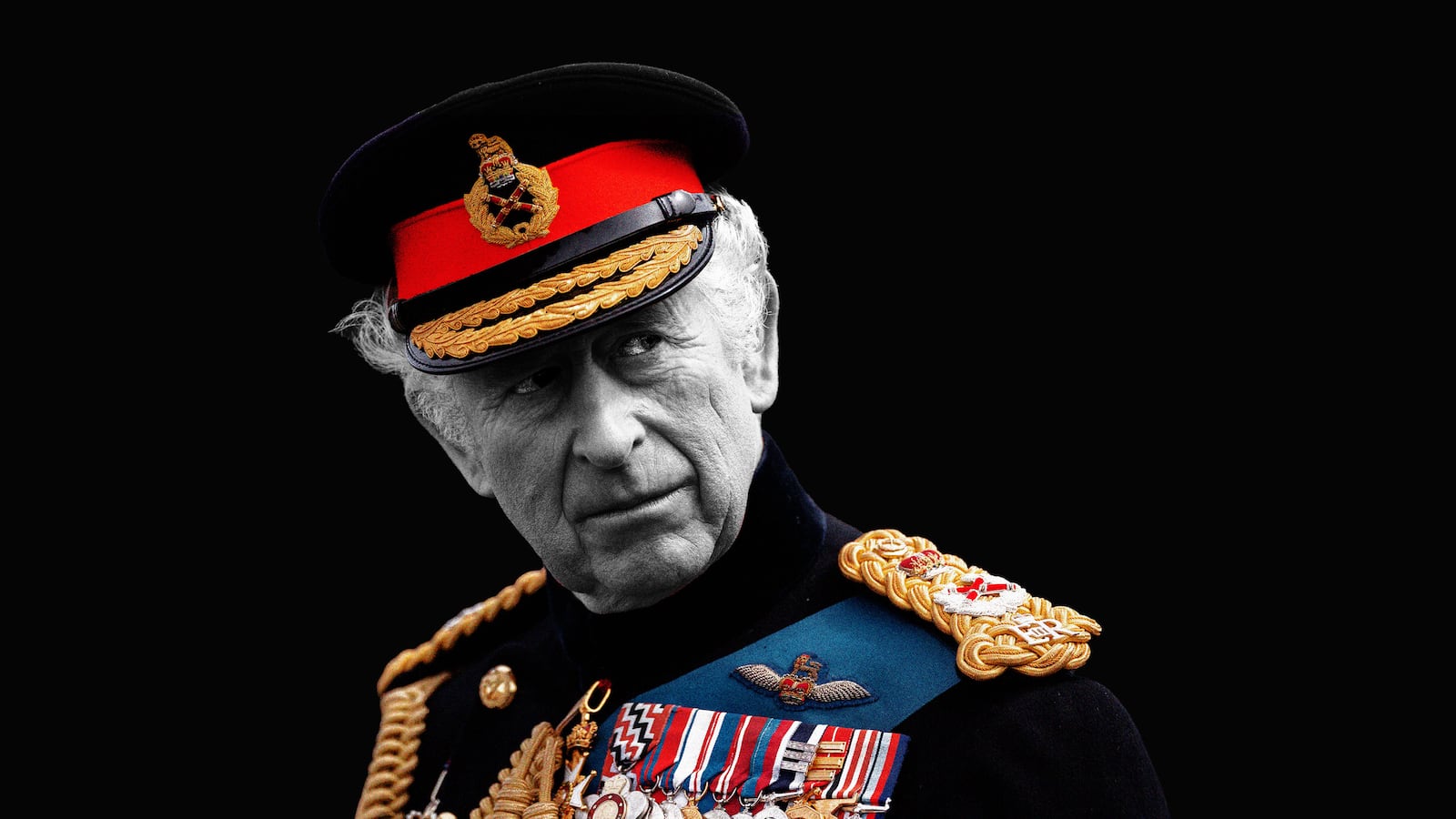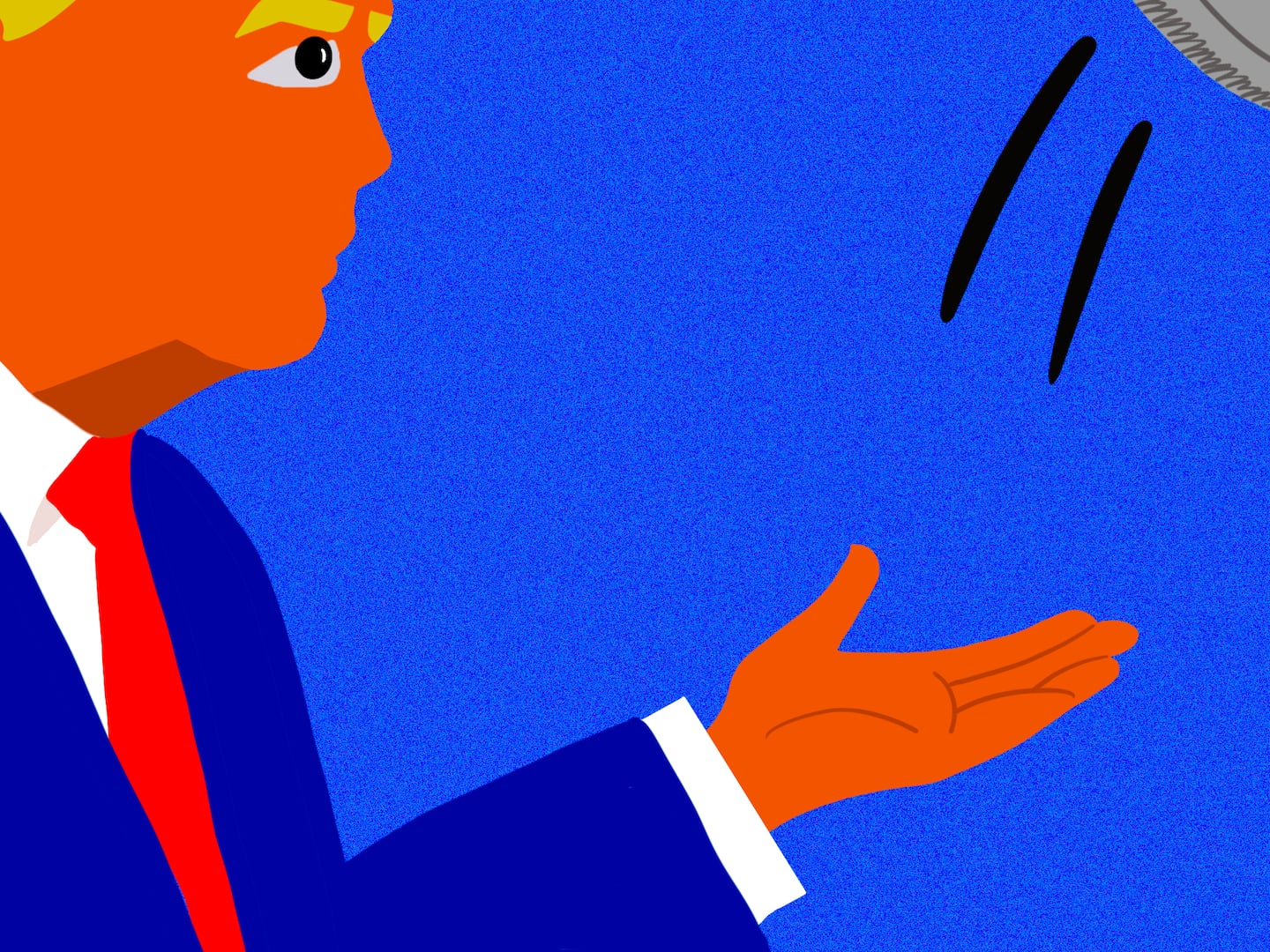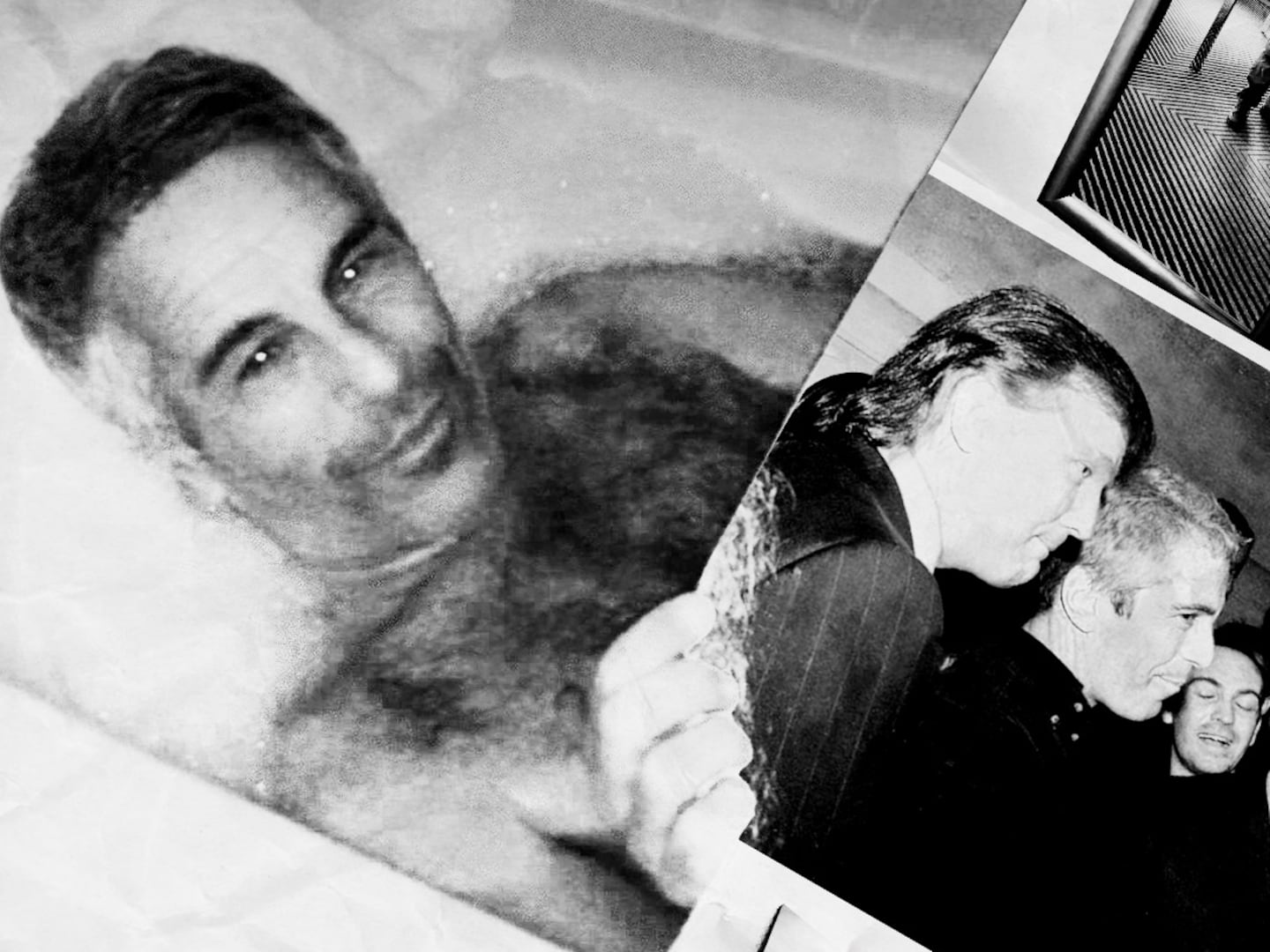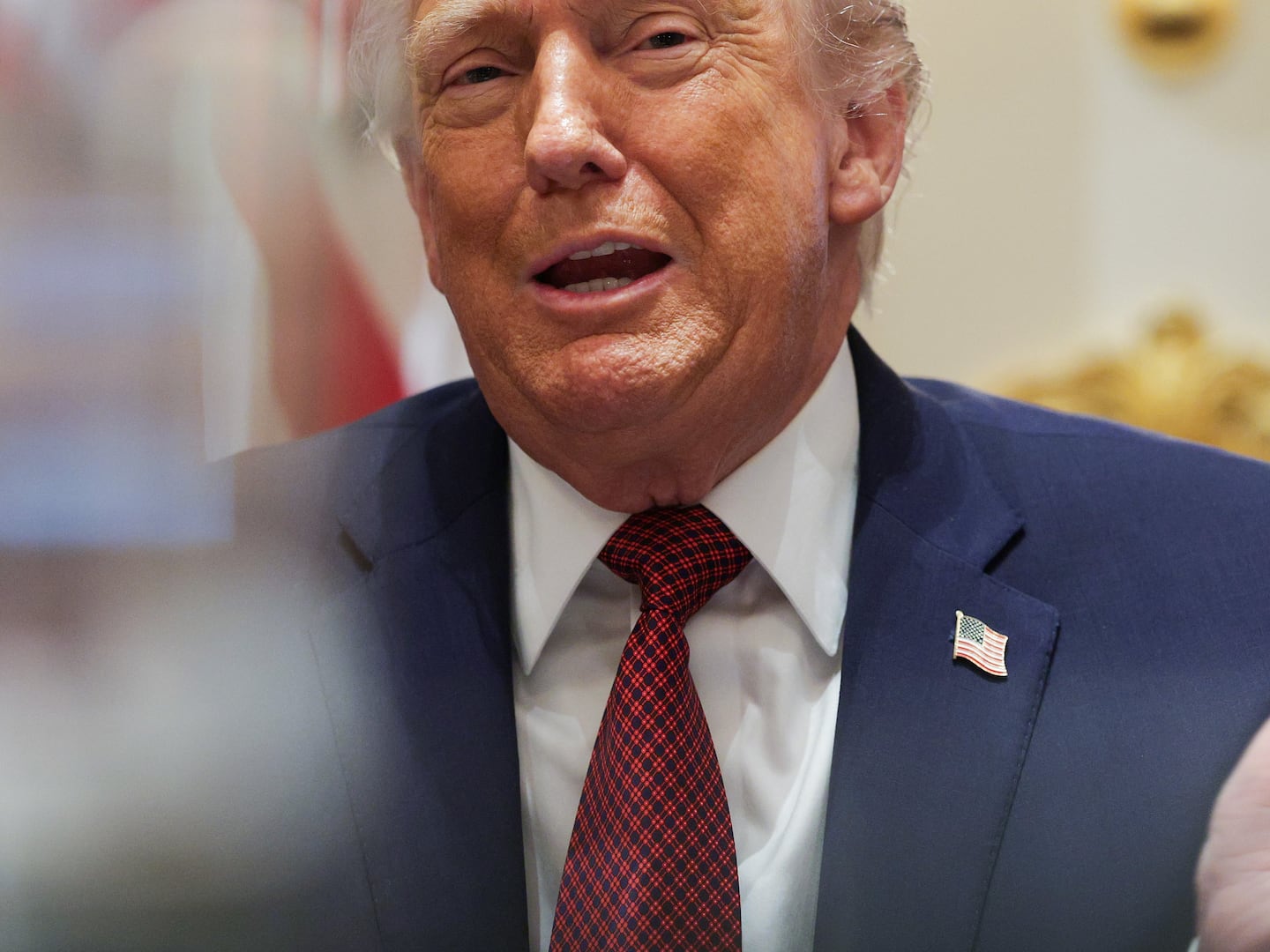Royalist is The Daily Beast’s newsletter for all things royal and Royal Family. Subscribe here to get it in your inbox every Sunday.
King Charles III had 50 years of adult life to study his destined role as monarch. And yet it seems, as he completes his first year on the job, that he never really grasped the basics of the role.
A lengthy review of Charles’ performance in the U.K. Sunday Times quoted sources saying that “he has been surprised at the increased workload… the red boxes and extra duties have come as an unexpected burden on his time.”
Really? None of Queen Elizabeth II’s daily chores were better known than the red boxes sent daily by the government, including documents needing the royal signature as well as reports on national and international events generated by ministries—they serve as a wide-ranging confidential briefing for the monarch. All accounts of the royal work ethic highlighted the red boxes—the queen famously digested them with vigor well into her nineties.
How on earth could this be “an extra burden” unforeseen by the 74-year-old understudy?
With that, according to the Sunday Times, came another shock: “There are so many more checks and balances as monarch. That’s frustrating for him.”
Understanding his constitutional role should have been the first lesson in How to Be King 101. And, in an interview with the BBC in 2018, Charles said that when he became king he would take a different approach “from his opinionated time as prince” and that it was “complete nonsense” to suggest he would be openly political because “I’m not that stupid.”
Indeed, it was very different when he was Prince of Wales. He was free to pester ministers, notably with handwritten opinions dubbed the “black spider” memos. Between 2004 and 2005 alone he wrote 27 memos to seven of Tony Blair’s ministries on issues as varied as fox-hunting (which he defended) and genetically modified crops (which he abhorred). For many years he was also a strident opponent of modern architecture, and his atavistic taste succeeded in killing several major projects, infuriating some of Britain’s finest architects.
But it was clear almost from day one of his reign last September that Charles did not grasp that the limits on his power would be decided by the policies of the government of the day—that he can’t act independently of what the British government wants. Within days of becoming king, he was reminded that his personal agency would be seriously curtailed—and it involved the most salient of his personal causes, the one on which he sees himself as a world leader—climate change.
He was all set to fly to the COP27 climate conference in Egypt when the then-prime minister, Liz Truss, forbade it. The intemperance of the move was typical of Truss, whose 50-day reign nearly sank the British economy, but the Tory party leadership remains zealously committed to the fossil fuel industry and wants no reminders from the king about the incongruity of this policy as the planet reaches record levels of heating.

A mural of Britain’s King Charles III on the side of a building, on the day of King Charles and Queen Camilla’s coronation, in west Belfast, Northern Ireland, May 6, 2023.
Reuters/Damien StoranCharles knows, however, that the Tories are virtually certain to lose the next election, due, at the latest, in around 15 months, and he can sit them out, hoping for a more collaborative Labour government under their leader, Keir Starmer.
He could be wrong about that. As far back as 1997, when Tony Blair’s Labour government was elected in a landslide, the party was leery of royal meddling and strongly averse to their opulent lifestyle. Blair’s wife, Cherie, was a republican, as were powerful figures in the party, and Blair himself was on record as favoring the Scandinavian model of “looking like a modern royal family living more modestly and engaged in good works.”
Starmer is similarly influenced by the party’s bedrock belief that the royal gravy train can no longer be supported at its current level. But Charles and his court seem blind to this threat.
In fact, it seems now that by carefully briefing the Sunday Times on the king’s “frustrations” the palace was, in fact, attempting to get in early with an important message: all the previous hints that he would be a reforming monarch, slashing the Victorian scale of the royal household, dumping the freeloading minor royals, and at least giving some acknowledgement of how out of keeping with the times all this is, all these were now void.
Instead, Charles has apparently, according to the Sunday Times, decided to be a “steady as she goes” monarch (a quaint nautical metaphor that might have come from the old seadog George V) prepared to defend the status quo—and this at a time when the king’s wealth is coming under far greater scrutiny.
At the center of the scrutiny is the way the monarchy is funded. For centuries this was decided every year by parliament, and the amount fluctuated according to the nation’s own wealth. In 2011, largely under the influence of Charles in negotiations with David Cameron’s Tory government, the source was shifted from public funding to become a percentage of the income from a royal cash cow, the crown estate, a corporate entity that manages a massive real estate and property portfolio.

Britain’s King Charles and Queen Camilla on the Buckingham Palace balcony following their coronation ceremony in London, May 6, 2023.
Reuters/Hannah McKayOn the face of it, this new arrangement left two politicians with control of how much money went from the estate every year to support the monarchy—the prime minister and the chancellor of the exchequer, who were trustees along with the treasurer to the king. If the profits of the crown estate soared, the percentage diverted to the royal family could be cut back to avoid indecent pay rises for the royals.
That was the theory. And when it was announced that next year’s grant would remain flat at £86.3m ($109m) the spin was that the king was aware that millions of his subjects were in financial straits and, in view of the rate of inflation, he was taking a pay cut. The percentage taken from the crown estate was cut from 25 percent to 12 percent because its income was soaring.
However, when vigilant reporters looked at the crown estate’s projected income beyond next year they found a very different story. The estate’s profits would leap from £442.6m ($559m) this year to £1.04bn ($1.3bn) in 2023-4, meaning that, in truth, the monarchy’s take-away share would leap to £124.8m ($158m) in 2025 and £126m ($159m) in 2026—a rise of about 45 percent. And that did not include the family’s other sources of income: from one of the world’s largest art collections, the Royal Collection Trust, predicted to rise from £10m ($13m) a year to £16m, as well as from the estates of the Duchy of Lancaster and the Duchy of Cornwall, both of which perform like mother lodes—the Duchy of Cornwall just reported a record surplus of £24m ($30m).
This does not look good. Apart from the huge sums involved, the picture is of unbridled plutocratic wealth, riches passively earned without effort or talent and, in one egregious example, simply by virtue of accidental archaic privilege. Because of rights assigned to the monarch at the time of the Norman Conquest, the crown estate owns nearly all of the seabed encircling the United Kingdom, extending to 12 nautical miles from the shore.
In January, the estate licensed six new offshore wind farms in a deal worth £1bn a year ($1.3bn)—and that’s just the start of a bonanza to meet the demand for renewable energy—for the green king, a river of gold. It was such a mind-boggling turn of fortune that Charles announced that the profits would go to “the wider public good,” although we have yet to be told how that will be managed and by whom.
A Labour government would, for sure, take a tougher line with this royal ATM. Starmer is not a republican and has more pressing priorities than the fate of the monarchy. To be certain of winning a clear majority in the next election he knows he needs to court older disaffected Tory voters, a group still solidly monarchist. But in a country where real household disposable income has barely risen in 15 years there are no votes to be lost by demanding more transparency and accountability—not to say prudence—from the king about his wealth.
But the home kingdom is not the only place where Charles’ rule is being tested. An aide was quoted in the Sunday Times saying that part of his notion of sustaining his mother’s legacy is “to make the nations and the commonwealth proud of the king and the king proud of himself.”
That’s an odd choice of words, as though from another age, suggesting that the king’s own pride is a priority dependent on the fealty of not only the people of the United Kingdom but also of the vast post-colonial populations of the 52 commonwealth nations where being “proud of the king” is an almost risible ambition—especially at a time when many of those nations, particularly in the Caribbean, are demanding atonement for the royal family’s record of direct involvement with the slave trade.
Charles II began that involvement in 1666 by granting a charter to the Royal African Company, an innocent-sounding name for a ruthless business that shipped slaves, in appalling conditions, from Africa to the Caribbean. In April, after a researcher discovered a document from 1689 revealing the transfer of a large block of stock in the company to king William III, the king made no response himself but a palace flack said, “This is an issue that His Majesty takes very seriously” and said that the king “supported further research.”
That was in great contrast to the former BBC news anchor Laura Trevelyan who, on discovering her own family’s wealth derived from the slave trade in Grenada, quit her job and founded a movement to make reparations to the islanders. She was joined by David Lascelles, a second cousin to Charles, who inherited an estate built on the earnings from sugar plantations on Barbados worked by slaves.
The group is called Heirs of Slavery, and is urging other British families whose wealth derives from slavery to join them. They are also urging the British government to support a Caribbean commission set up to claim reparations from former colonial powers—although “reparations” is a word that no British government is yet ready to acknowledge has any legal standing.
The king is, in essence, practicing a tactic common among all those powers that were the beneficiaries of brutal slavery—historical amnesia. There is clearly no need to wait for researchers to unearth any more documentary proof. The legacy is pervasive, and written in blood and profits. Those profits flowed steadily into the royal coffers for several centuries, immunized only by time, and that immunity is now shattered.

King Charles III meets the crowds on Union Street during a visit to Aberdeen Town House to meet families who have settled in Aberdeen from Afghanistan, Syria and Ukraine, in Aberdeen, Scotland, Oct. 17, 2022.
Jane Barlow/Pool via ReutersAnd so this is what the “steady as she goes” status quo looks like. The puzzle is how quickly the king has settled for it. He never actually committed explicitly to a new personal agenda of reforms. Now we have his mother’s monarchy without his mother, and that’s a big difference because she was unassailable and he isn’t. She was the consummate sovereign, knowing every nuance of the job and impeccable as head of state.
In his first year, Charles has already fallen far short of that standard, as she probably thought he would. There are few clues to her views of his suitability for the job. She did say that he lacked natural executive skills (she ran “the firm” like a seasoned CEO). His father was more blunt, declaring that Charles “was not king material”—but Prince Philip said that at a time when public opinion turned against Charles when his adultery with Camilla was revealed in all its bizarre carnal details. His relationship with his parents was never happy and his mother’s open preference for the muscular vulgarity of Andrew was hard to take.
As he blunders on trying to grasp what he can and cannot do, the king can seem surprisingly unguarded. For example, in March, he was beguiled by the Tories into a nakedly political maneuver. They were trying to settle a dispute in Northern Ireland, for which they needed the support of the hardline Unionist party. They decided to sweeten it for the nativist Unionists by giving it the royal imprimatur, calling it the Windsor Framework.
Normally, settling such a critical dispute would have led to a signing ceremony at 10 Downing Street. But in order to justify its title the diplomats were all shipped out to Windsor, where the stunt quickly descended into farce. Palace advisers ruled that the deal could not actually be signed at Windsor Castle. That happened at a chain hotel three miles from Windsor Great Park, and it was publicly announced at Windsor Guildhall, just 120 feet from the castle.
The Unionists complained that it was “a cynical use, or abuse, of the king.” The political weekly The Spectator warned that the monarch was entering “dangerous territory.”
Then there was the coronation—an overlong pastiche of medieval rituals that were awkwardly choreographed and sometimes resembled reruns of Monty Python sketches. Much of it was concocted by Justin Welby, the Archbishop of Canterbury. He’s a former oil company executive who believes in charismatic evangelicalism and who also seems in thrall to the idea of the divine right of kings. Only 15 percent of Brits are followers of the Church of England and yet the coronation, in its attendees and rituals was a tone-deaf concentration of (mostly old) white Anglican power presented to the most culturally and religiously diverse nation in Europe.
During much of the ceremony Charles looked alone and morose. Afterwards, his only complaint was that the limelight-loving Welby insisted on delivering a sermon (something that hadn’t happened at a coronation in a century). Once more, the king seemed ineffectual, allowing someone else to have their way—used rather than his own man.
There now seems to be a solid self-interested concordat around the king that it’s safer for him not to attempt to unravel the established order. As long as the Tories remain in power two civil servants, Simon Case, the cabinet secretary, and Clive Alderton, the king’s private secretary, will make sure that the king stays malleable and in line with the government’s interests. Alderton, as the most powerful courtier, as well as wrangling the king, has had to cope with most troublesome noises off—Prince Andrew’s malefactions and, of course, Prince Harry’s memoir Spare and its deeply emotional revelations. He doesn’t need any more turbulence.
And he might be lucky: It does seem that for the moment there’s a kind of uneasy armistice between California and Windsor—Harry and Meghan have their own frenetic agenda and seem, at least for the moment, no longer to be a continual distraction to the king.

Britain’s Prince William, Duke of Cambridge, and Catherine, Duchess of Cambridge attend the world premiere of the James Bond film No Time To Die at the Royal Albert Hall in London, Sept. 28, 2021.
Reuters/Toby MelvillePrincess Anne, often underestimated as an influence on her brother, let her mask slip a bit earlier in the year when she told a Canadian interviewer that it would be a mistake to slim down the monarchy. She seems to have won that argument. For the moment the Prince and Princess of Wales—Prince William and Kate Middleton—serve well as a façade of modernity in an otherwise reactionary family.
In the last year William and Kate have realized that they have become indispensable to the Windsor image because they connect to the public so naturally and in a way that neither the king nor Queen Camilla can. They are also probably more aware that the longer William has to wait to take his father’s place the more perilous the monarchy’s position is likely to become.
The threat to the monarchy is real and it’s bipolar: indifference or extinction. As for the first, one reader’s comment posted in response to the Sunday Times’ reporting defined the now starkly clear problem with the king: “It’s hard to do wrong when you do almost nothing. Let’s be honest, nobody would notice if he just disappeared.”
As for the second, republicanism isn’t yet anything like close to being a majority movement. According to current polls, only about a quarter of the country wants to dump the monarchy. What is far more likely is that a future government might well find it politically unsustainable to any longer support a royal household of anything like the current scale.
The crown, as a disembodied entity, is a department of state, albeit as much an instrument of national propaganda as it is the seat of sovereignty, regardless of who occupies the throne. The institution has outlived 62 monarchs in around 1,200 years. Removing it would be a huge constitutional challenge. Better to recognize that the current king is a poor steward of the institution and should be put out to grass. It’s time for the Scandinavian model.







